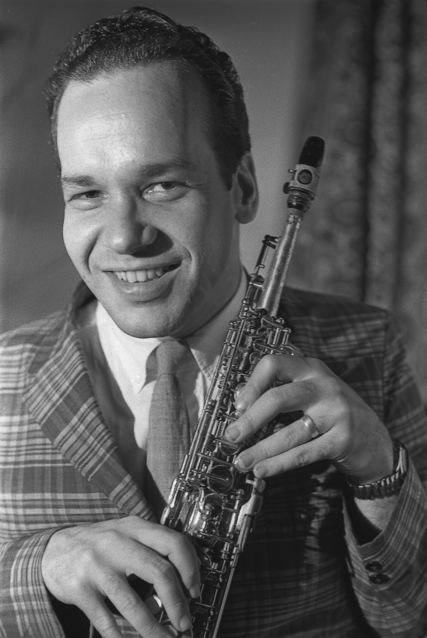What's New?
The PoD Roundtable
moderated by Bill Shoemaker
(continued)

Steve Lacy, 1964 Larry Fink©2008
Shoemaker: The late Jack Sohmer is best known as a critic who mainly wrote about the mainstream jazz of the ‘30s through the ‘50s. He was also a tenor player on the New York scene during the ‘50s – Steve remembered him being a good player. Jack was exposed to Steve’s playing regularly then, and thought at the time that Steve was a little bit like a chameleon, in that one month Steve’s playing was straight out of Benny Carter, and then the next month Steve would be playing a lot of Lester Young. When I asked Steve about this, he said it probably was a reflection of what he was listening to at the time – one of his day jobs during those years was at a record store, and he was able to hear everything as it came out. So, the choices Steve made during these years were based not only on his knowledge of the jazz tradition but his ability to play in many styles. Steve was the not stereotypical avant-gardist who only played what he could play. His choices, even back in the ‘50s, were made with a well-informed discernment. His entire career can be seen as a series of choices: Cecil; Paris; art songs; etc. In your experience of him as a mentor and/or an educator, how did Steve discuss or demonstrate the issue of making artistic choices?
Chase: This is a tough question. Most of what surprised me in Steve’s teaching at NEC, as I heard about it from him and students and occasionally observed it, was his emphasis on traditional skills, knowledge, and lore, applied either to repertoire like Monk’s or to his own original compositions. I think the students (those who gathered around him) struck him as being in too much of a hurry to put swing and bebop behind them and go into conceptual, experimental music. So in a way he was putting the brakes on some students’ urges to define their own artistic choices and directions, probably because they were getting ahead of themselves by excluding things they hadn’t really mastered beyond a level of superficial competence. I also suspect that his return to the U.S. and close, constant contact with young musicians surprised him in a couple of ways. Some may have seen him as an avant-gardist without understanding the nuances of his stance, at first. I think being back in the U.S., maybe Boston particularly, brought back his own early experiences and made him want to pass on what he learned to people too young to play alongside Rex Stewart, Sam Woodyard, or Monk, or hear Duke Ellington or Charlie Parker live.
As a teacher, Steve’s choices and their clarity made a big impression. For students, he exemplified the mature artist who has built his strengths and passionate, long-term interests into an honest, uncontrived style. I think students who worked with him got a clear sense of what it takes to be a complete, continuously creative, sincere, original composer and improviser. There are a few other teachers around our conservatory who are able to teach that — Ran Blake comes to mind — but, Steve was a huge presence for those two years and I think it was life-changing for a bunch of students.
During those last few years, he seemed to have become even more focused on his own artistic choices. In repertoire, it was the art songs (poem and text settings), his own instrumental “classics,” and always Monk’s music. His playing was purer than ever, it seemed to me.
In teaching and clinics, he spoke fairly negatively about the kind of free improvisation that doesn’t have clearly stated, shared constraints on form or material. He talked about free playing autobiographically as a period of research in the past that was of its time (mid- to late 1960s, Italy and Argentina, The Forest and the Zoo) and yielded some useful results, but was over and done with. He explained that it was useful in that it helped him try out material, weed out unwanted things, and it led to his own much more structured compositions with guided improvisation.
He seemed to have very strong guidelines in mind about improvisation, even ostensibly free, open-ended improvisation. When I played in his Precipitation Suite with him and the Boston-based Jazz Composers Alliance he was very definite about what he wanted me to do in an improvised duet, and gave similar instructions for larger group improvisations. And the few other times I got to perform with him, we played 12-bar blues (“Misterioso”, or “Baghdad Blues” with a short, conducted, programmatic group sound improvisation).
These glimpses of working with Steve matched stories I heard from Lee Konitz about their playing “free” together, and about his interactions with Third Person (Tom Cora and Samm Bennett) and perhaps ROVA. Steve seemed to prefer working with his own material or with pretty strictly controlled structures for improvisation, in his later years. When he performed in off-campus clubs or galleries with students while teaching in Boston, they played largely Monk tunes, sticking to the forms and changes, or (much less often) his songs.